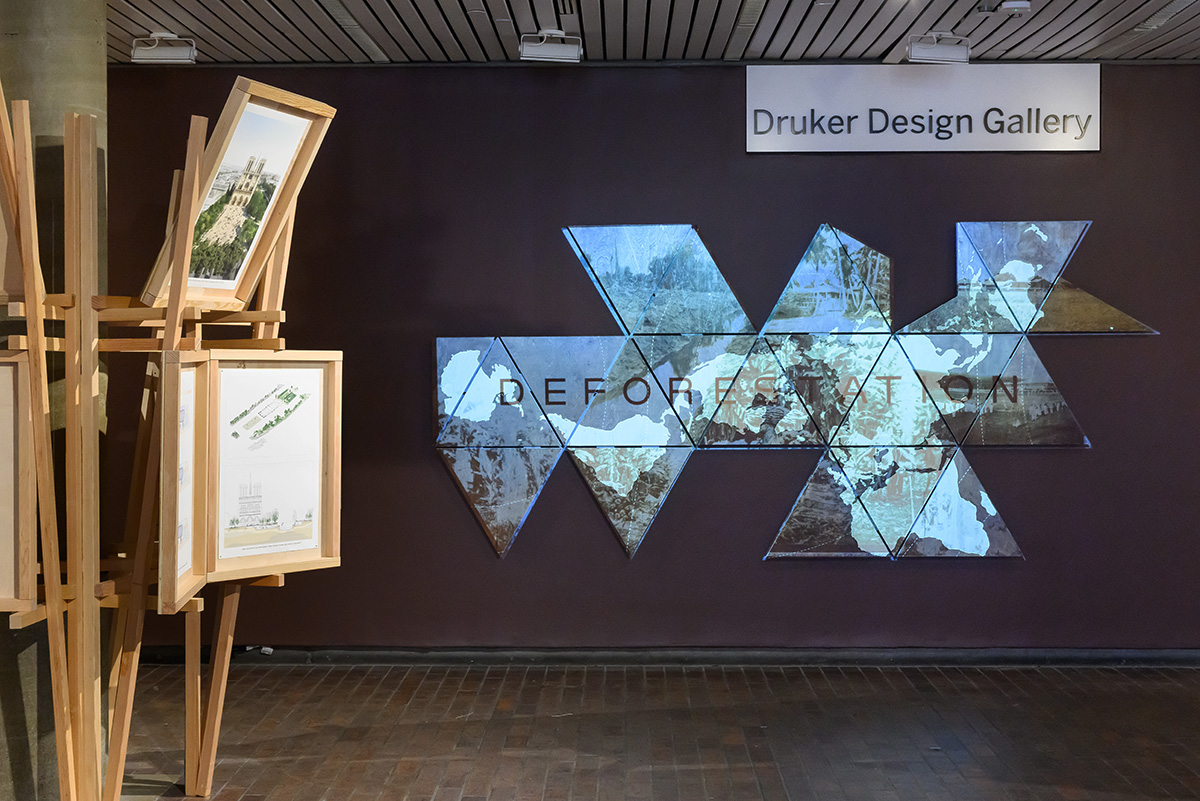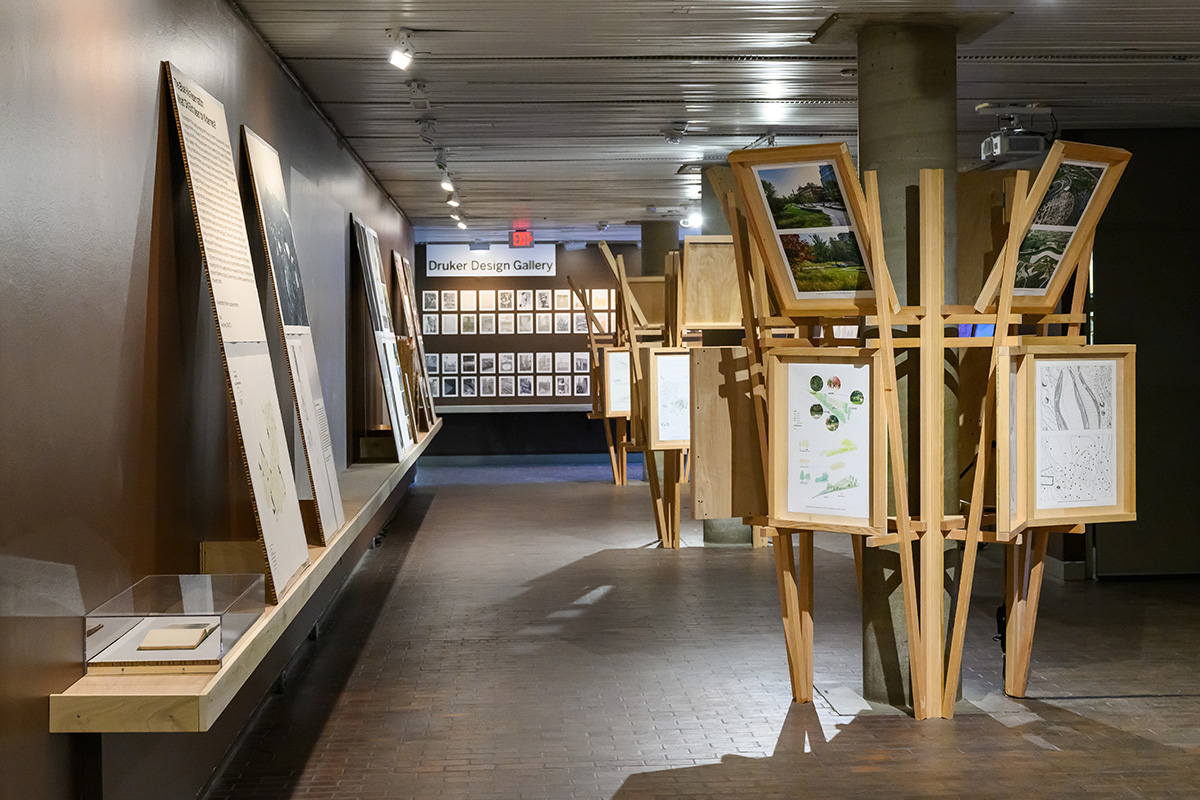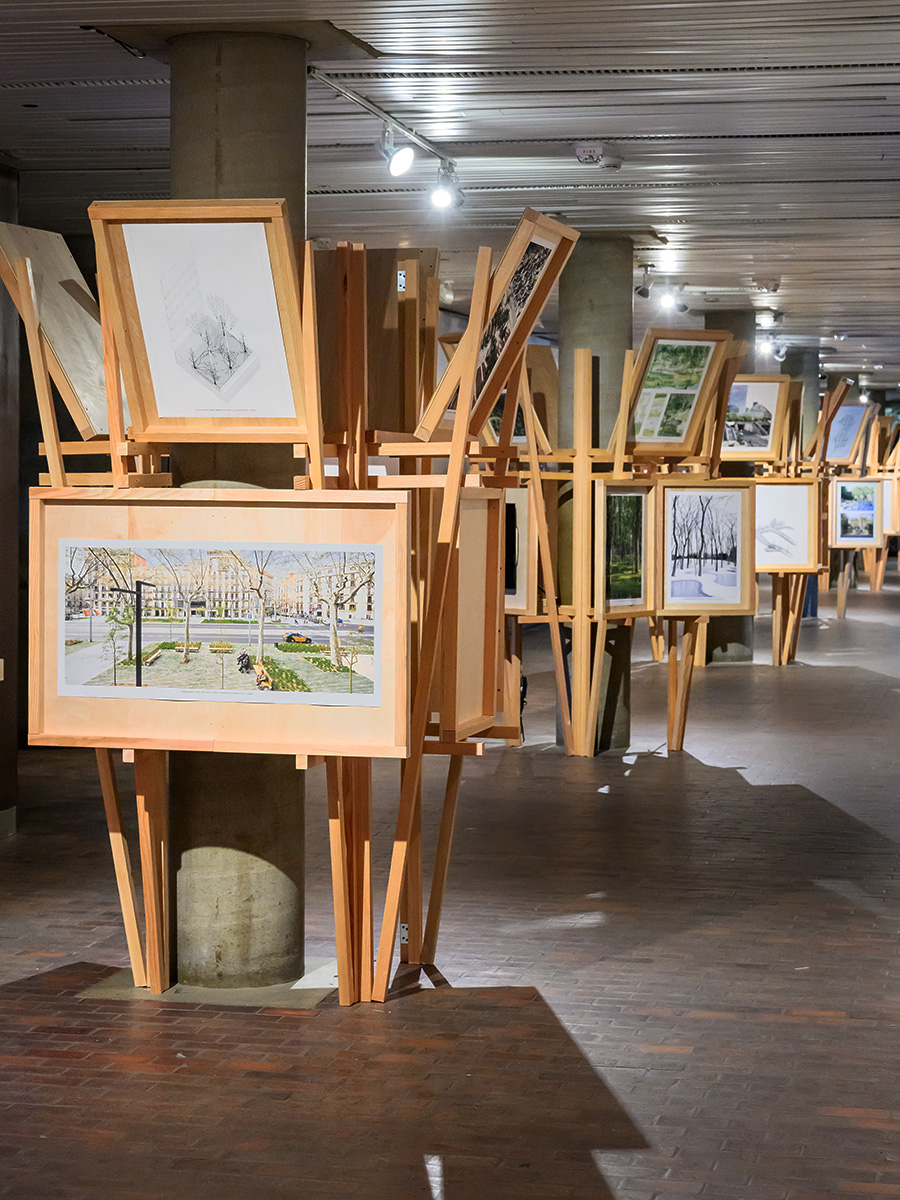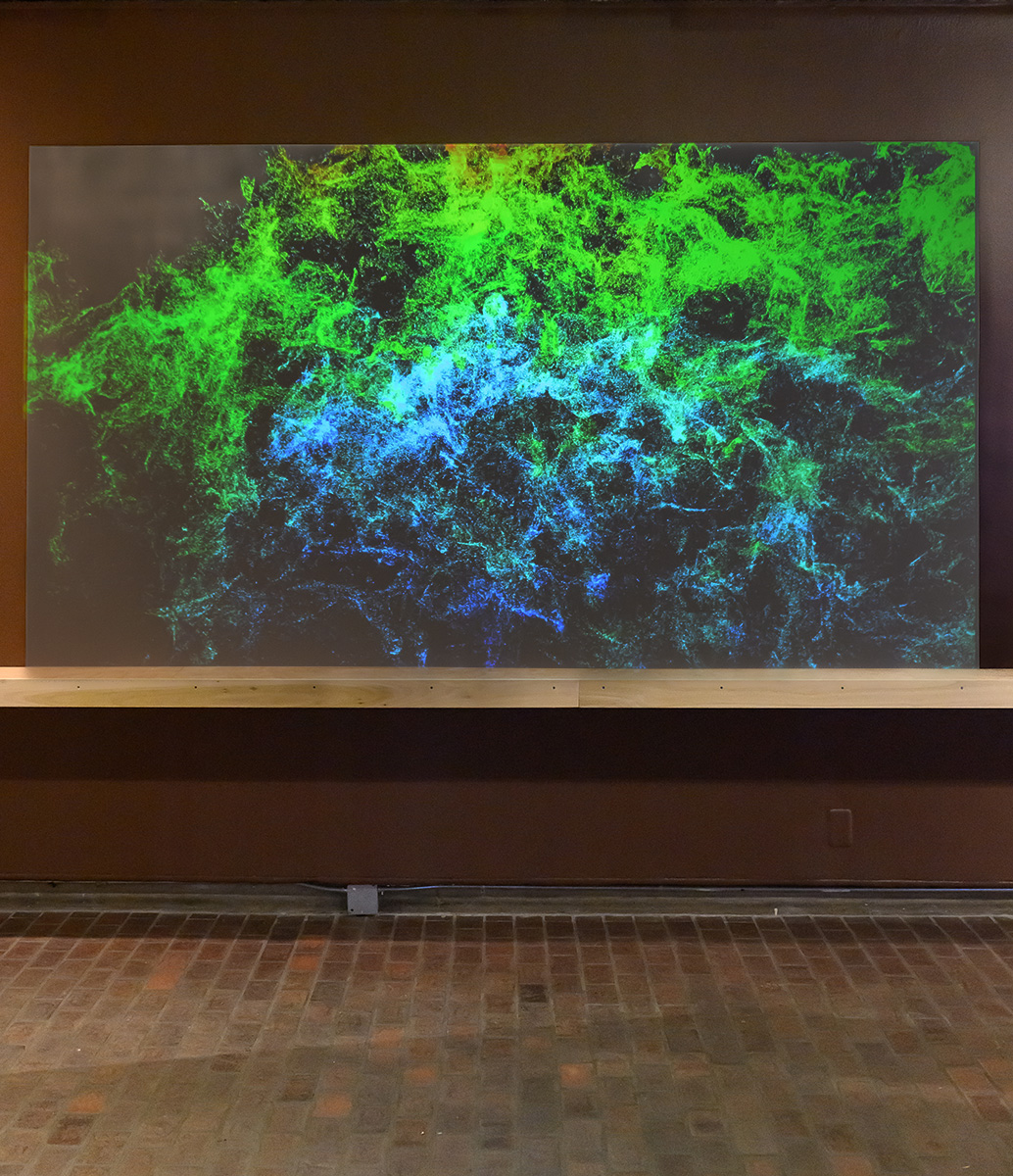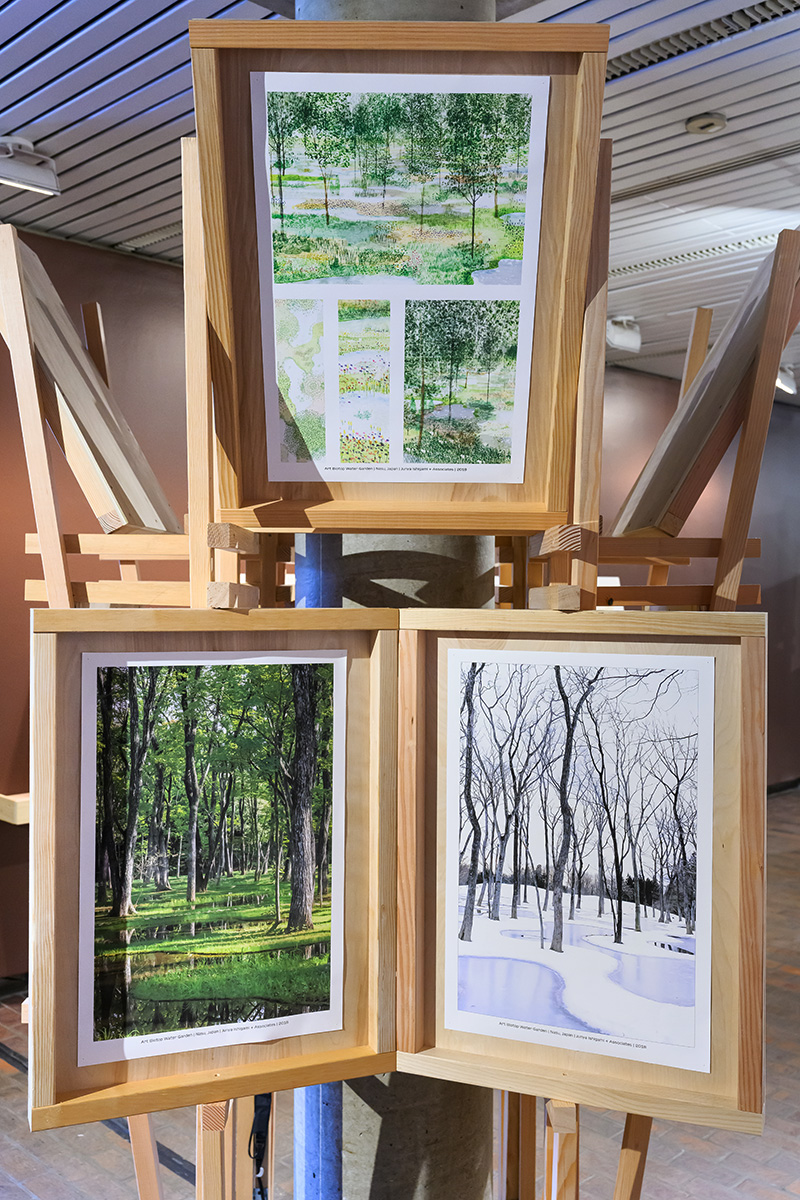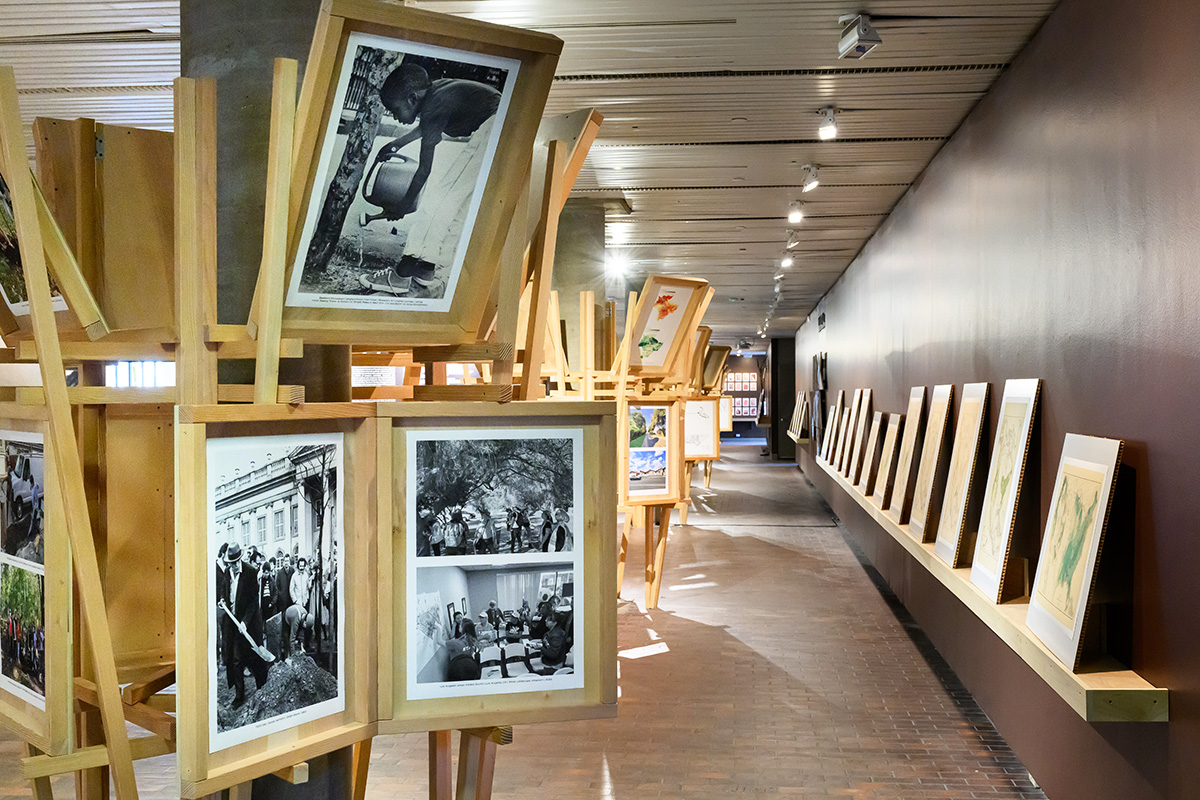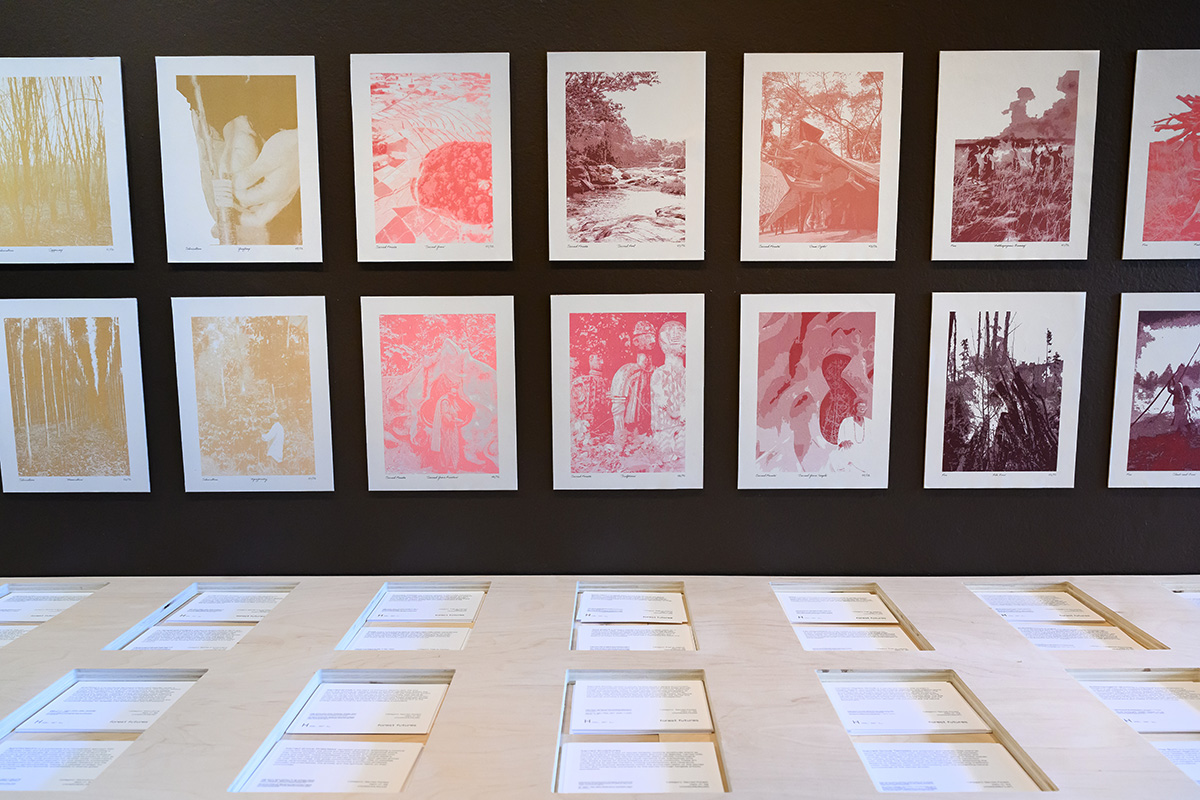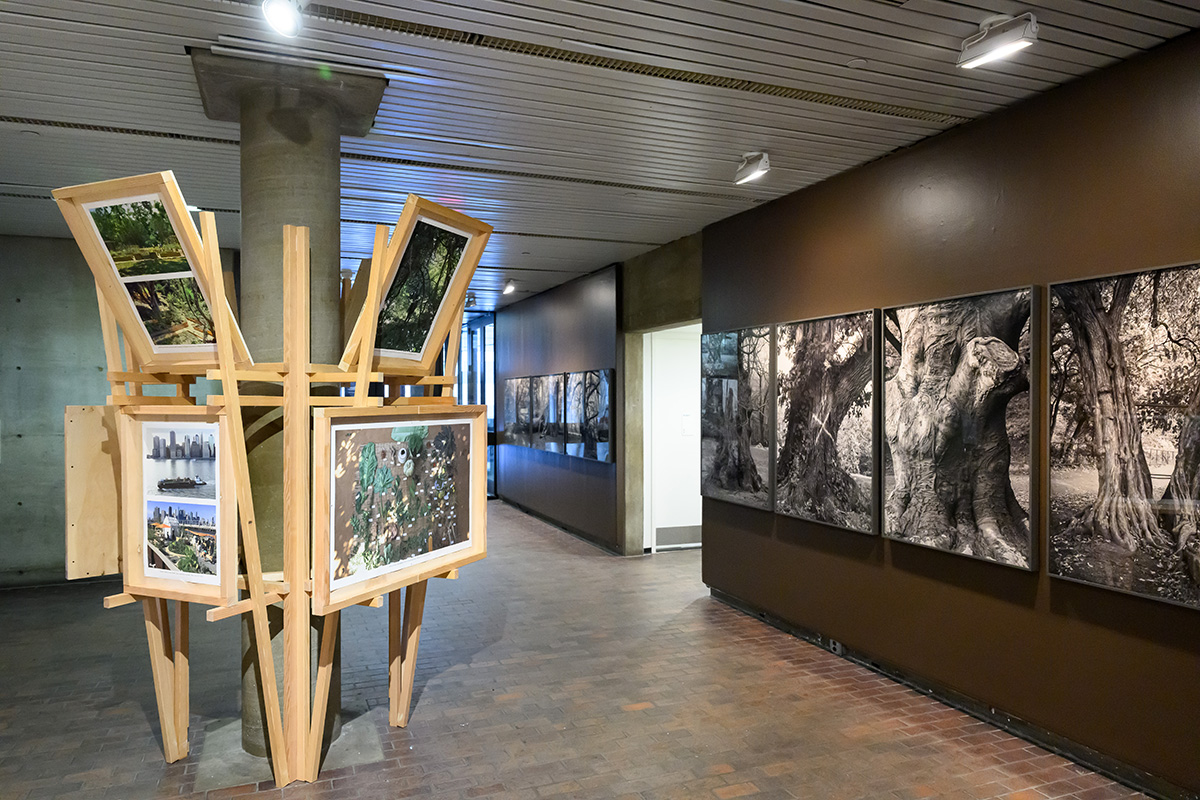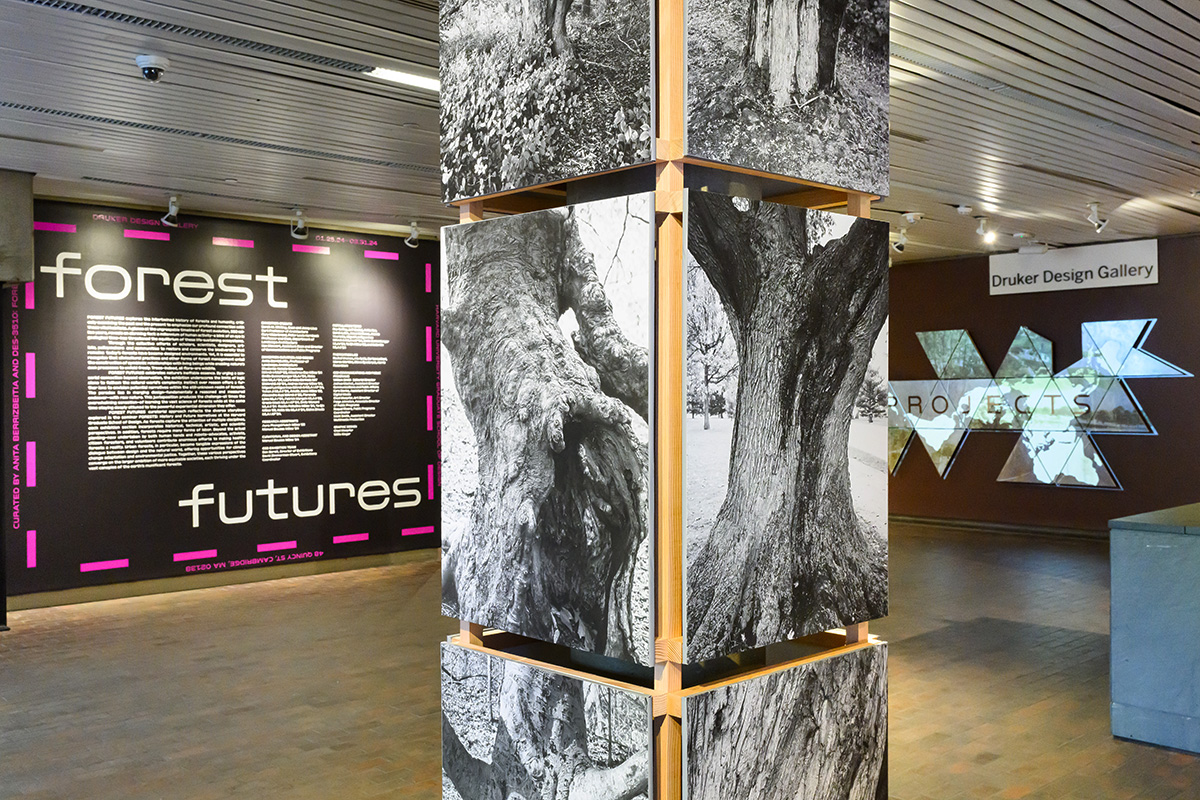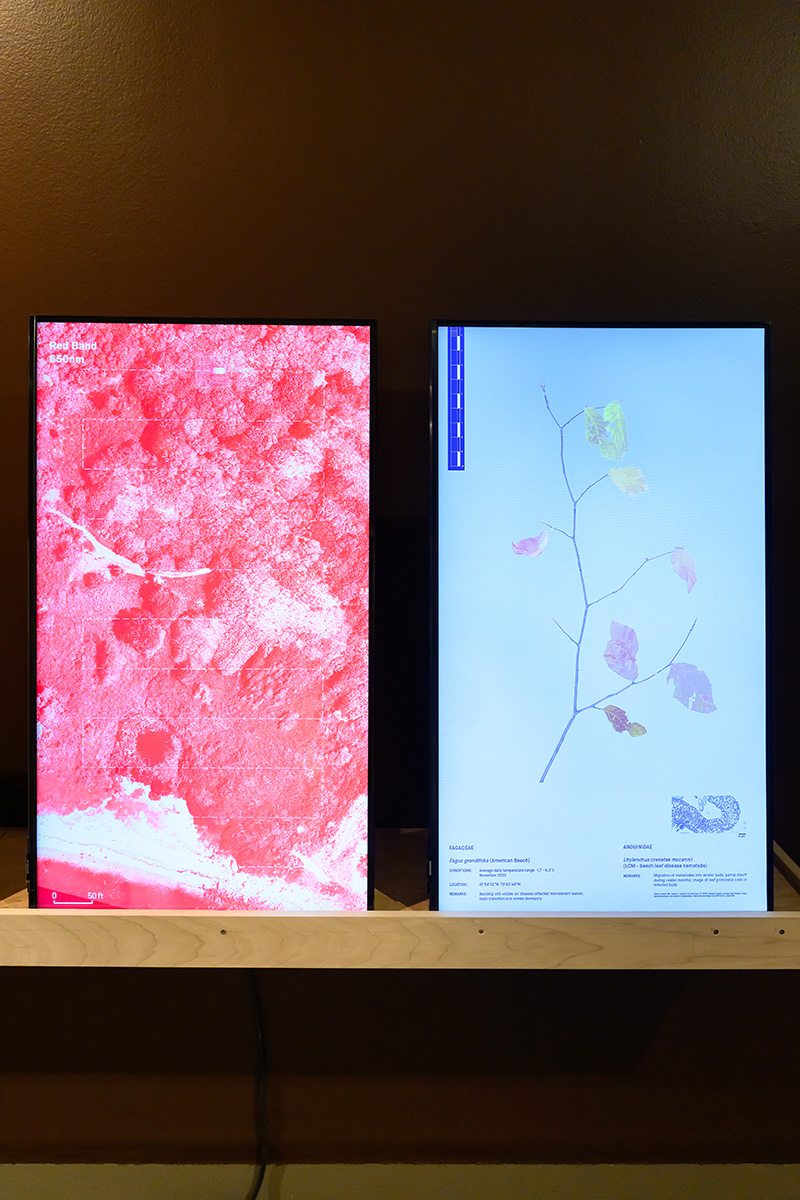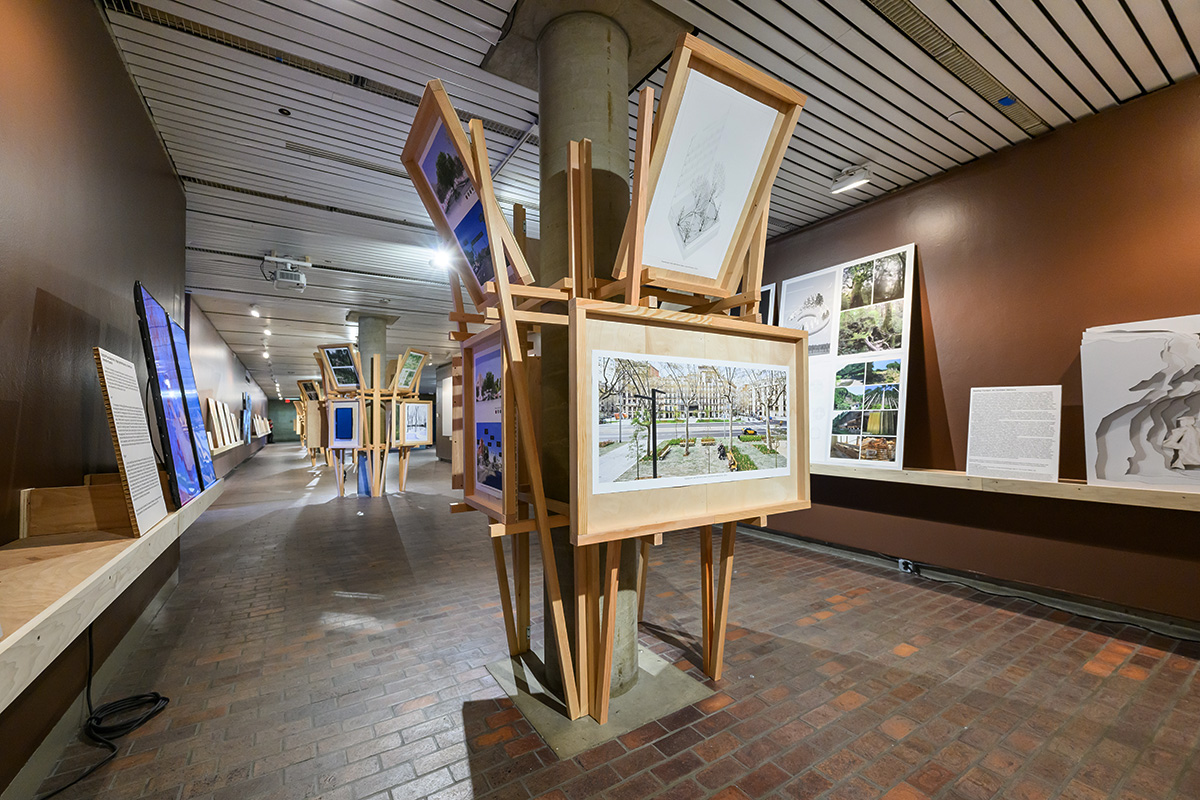FOREST FUTURES
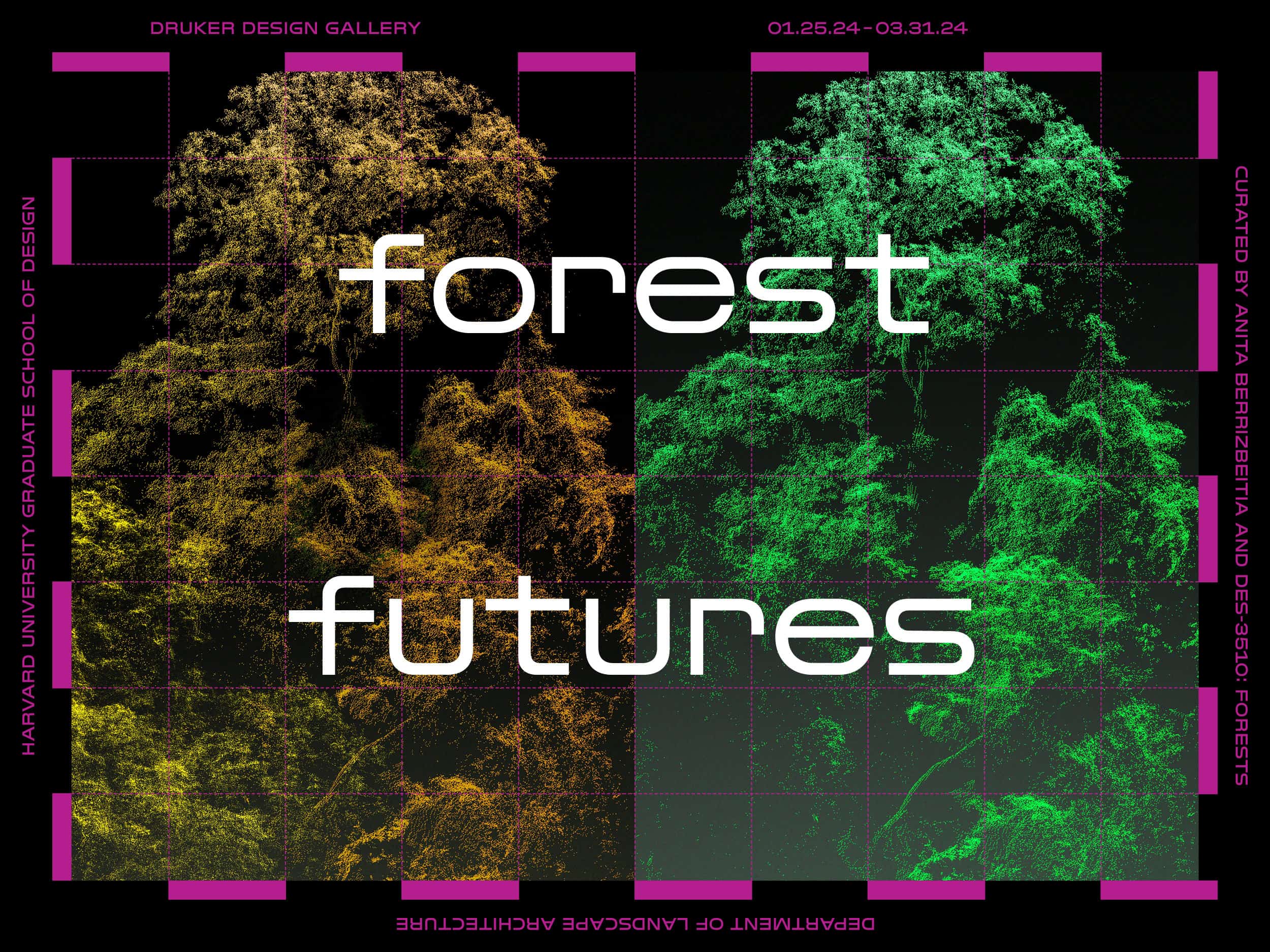
FOREST FUTURES explores the intertwined history of forests and humanity, critically examining the past and the present to emphasize our profound connection with these vital habitats. A glance at the ungraspable timeline of forest evolution, 350 million years, reveals an alarming fact: a millennium of human activity—a blink of an eye in geological time—has threatened the equilibrium of these life-sustaining ecosystems.
Through the collective efforts of scholars, scientists, designers, artists, policymakers, and communities to restore and conserve the biodiversity that remains, today’s forests have become designed environments. Yet, it is essential to recognize that silvicultural practices and other forms of forest management entail the construction of symbiotic relationships with living beings while enabling nature’s own processes to unfold freely. Trees—indeed, all flora—are wildlife.
FOREST FUTURES celebrates nature’s ineffable essence. By urging a sensorial connection beyond observation, the exhibition underscores the limits of logic alone to fathom the natural world’s complexity. Instinct over reason offers a further lens to envision potential narratives within the still-unknown realm of forests. The paradox lies in merging design—fundamentally a reasoned and measured endeavor—with raw nature. This juxtaposition produces the challenge—at times the overwhelming sensation—of learning the vast science of forests while at the same time staying deeply attuned to the powerful experiential dimension they offer.
FOREST FUTURES’ curatorial approach reflects the diverse storylines explored in the seminar FORESTS: History and Future Narratives at the Harvard Graduate School of Design. As forests capture the attention of multiple disciplines, each exhibition section incorporates historical, technical, artistic, and scientific perspectives. In addition, forests require many forms of labor. Beyond the actual planting—now undertaken by both human hands and robots—advocates, activists, citizen foresters, and volunteers contribute enormous efforts to making healthy forests a reality. Urban forests, in particular, become tangible expressions of the dialogue between design and the natural world, offering opportunities for climate change adaptation and environmental justice. Together, these various perspectives converge on the larger ambition of more equitable societies, each thriving under the vast canopies of the earth’s munificent forests.
CONTRIBUTORS
Ajuntament de Barcelona, Barcelona City Council, Arquitectura Agronomía, Francesca Benedetto, Silvia Benedito, Anita Berrizbeitia, Bureau Bas Smets, Buro Happold, Luis Callejas/LCLA Office, Danielle Choi, Cities4Forests Program, Kira Clingen, DPA Picture Alliance, John Dialesandro/LA Times, Gareth Doherty, Gerber Architekten, Ed Eigen, Lisa Haber-Thompson, Mark Heller, Henning Larsen, Howard Center for Investigate Journalism and Capital News Service, Mariona Gil, Michael Van Valkenburgh Associates, Stanley Greenberg, Junya Ishigami + Associates, Àlex Losada, Magnolia Tree Earth Center, Mosbach Paysagistes, NASA Earth Observatory, Omrania, Curro Palacios, Pablo Pérez Ramos, Reed Hilderbrand, RI India, STOSS Landscape Urbanism, SETEC Engineering, Studio in Site, SWA Group, Inc., Taller Capital Loreta Castro Reguera, Daniel Vargas, WRI India, WRI Mexico, and Zion Breen Richardson Associates
The exhibition also includes 28 black and white photographs by New York artist Stanley Greenberg. Most of these (25) are from his book Olmsted Trees (2022), which documents trees planted in the 19th century for Olmsted’s original park designs around the country, including many in Boston. Additional photographs, entitled Coronavirus Shelters, are of rustic structures built by local residents in Prospect Park at the beginning of the pandemic, created to provide play space when public playgrounds had been closed.
CREDITS
Exhibition Curation and Design
Anita Berrizbeitia, Professor of Landscape Architecture
Students: Natalie Boverman MArch I/ MUP ‘25, Hiteshree Das MDes ‘24, Emilie Dunnenberger MLA I ‘24, Rinka Gao MLA I ‘24, Laura-India Garinois MIT SMArchS AD ’24, Andres Harvey MDes ‘24, Miguel Lantigua Inoa MArch II / MLA I AP ‘24, Yuhan Ji MLA II ‘24, Amelia Jones MDes ‘25, Alexandra Kupi MArch II ‘25, Florencia Lima MLA I ‘24, Patrick Margain MLA II ‘25, Gracie Meek MLA I AP ‘24, Emily Menard MLA II ‘24, Rosita Palladino MDes ‘24, Ya Qin MDes ‘25, Katie Wu MLA II ‘24, Elaine Zmuda MLA I AP ‘24.
Research Assistants
Aura Phongsirivech MDes ’23, Manuel Bouzas MDes ‘24
Curatorial and Design Assistant
Manuel Bouzas MDes ‘24
Dan Borelli, Director of Exhibitions
David Zimmerman-Stuart, Exhibitions Coordinator
Installation Team
Ray Coffey, Jeff Czekaj, Anita Kan, Sarah Lubin, Jesus Matheus, Joanna Vouriotis, Miguel Lantigua Inoa MArch II / MLA I AP ‘24, Emile Dunnenberger MLA I ‘24, Ya Qin MDes ‘25, and Katie Wu MLA II ‘24
Fabrication Lab
Rachel Vroman, Iris Ayala, Burton LeGeyt, Marco Martins, Steve Spodaryck, Harris Rosenblum
GSD Communications and Public Programs
William Smith, Editorial Director
Joshua Machat, Assistant Director Communications and Public Affairs
Kyra Davies, Assistant Director of Digital Media
Chad Kloepfer, Art Director
Paige Johnston, Associate Director of Public Programs
Raquel Rivera, Public Programs Coordinator
Matt Smith, Assistant Director, Multimedia Production
Graphic Design
Chad Kloepfer and Willis Kingery
